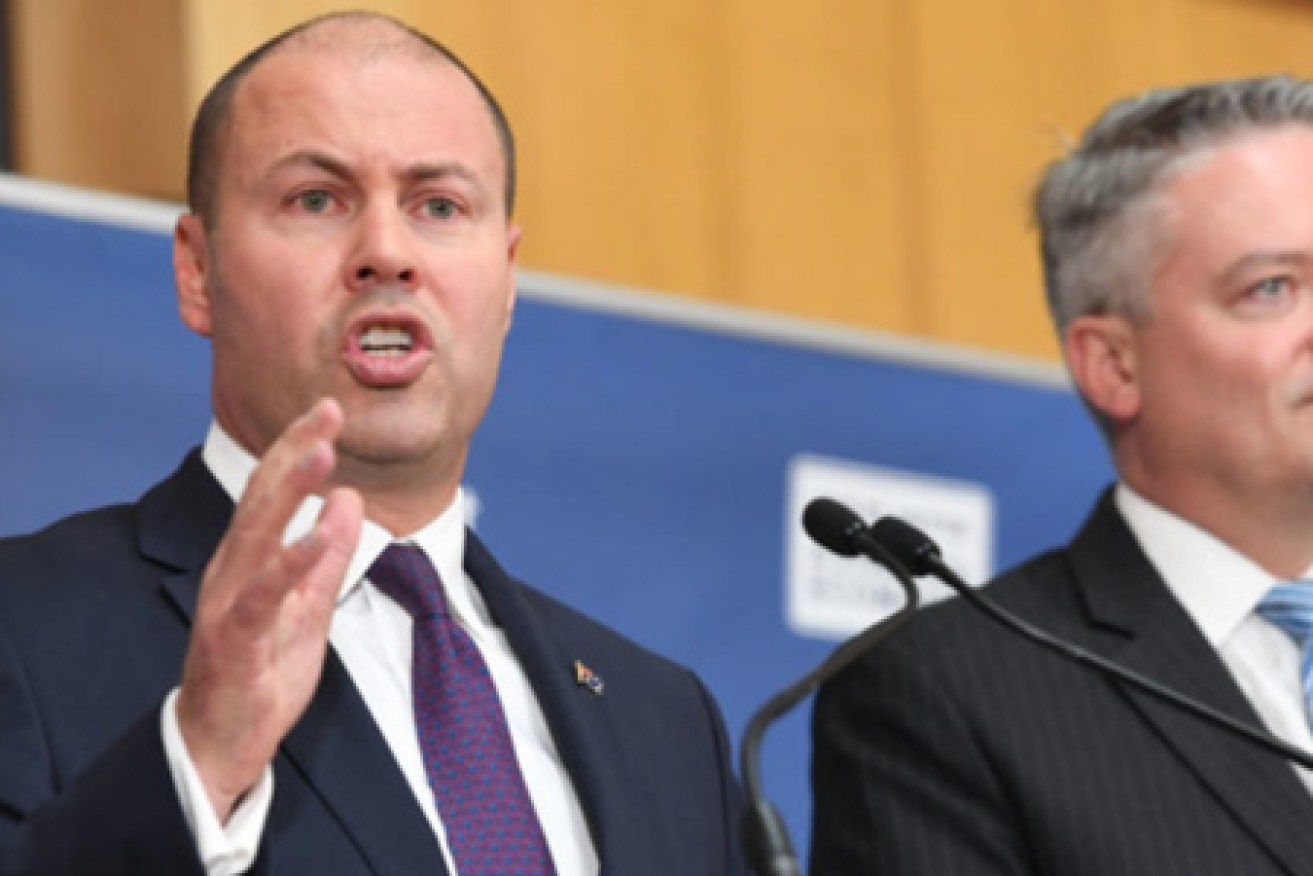A sleight-of-hand balanced budget is no guide to our economic health


Josh Frydenberg and Mathias Cormann announced the surplus just before the unemployment figures came out. Photo: AAP
It is possible to make too much of last financial year’s federal budget coming in effectively “balanced” and another uptick in the unemployment rate.
But since the government chooses to crow about its fiscal sleight-of-hand, here goes: A cynical soul might wonder about the coincidence of Treasurer Josh Frydenberg and Finance Minister Mathias Cormann grandstanding the 2018-19 budget outcome of a negligible deficit just ahead of the Australian Bureau of Statistics announcing that unemployment and underemployment had risen again last month.
Certainly the “Back in the Black” slogan provides competition for media space with “Unemployment up to 5.3 per cent, 1.17 million Australians underemployed”.
The worry is that the trend in both sets of numbers is set to continue this year – from a budget as good as balanced to a surplus and unemployment rising to 5.5 per cent – and quite possibly more.
Beyond the superficial appeal of Australian politics’ surplus fixation, it is rather obscene for a government to be boasting about tightening fiscal policy – that’s what a surplus means – when unemployment is rising, on its way to 5.5 per cent and possibly beyond, as international economic storm clouds gather.
At best, the smaller-than-forecast deficit for 2018-19 is more about good luck than good management.
I mean, gee, the government wouldn’t want anyone to think that it planned to underspend on the NDIS by $4.6 billion and quarantine another $1.3 billion from the Disability Care Australia Fund, would it?
Tweet from @DylanAlcott
And then there’s the multibillion-dollar tax windfall that has flowed from the tragedy of hundreds of lives lost from failed iron ore tailings dams in Brazil.
That’s what has sharply pushed up Australian iron ore prices as Brazilian production was slashed.
That windfall, plus higher income tax receipts from employment growth, meant government revenue was a fat 24.9 per cent of GDP – the highest since the resources boom was at its peak.
That’s also well above the government’s utterly nonsensical magic number of “23.9” – the limit it has set itself for revenue as a percentage of GDP.
See, it’s easy to balance a budget by being relatively high-taxing and holding down spending.
With iron ore prices and employment growth holding up, and with the Morrison/Frydenberg/Cormann team continuing to refuse to add any fiscal stimulus to help the Reserve Bank try to limit the rise in unemployment, there is every chance this year will deliver the much-promised surplus.
But at what cost to those 1.17 million-and-rising underemployed Australians, the increasing number of small businesses in trouble, the “retail recession” and the many millions who keep seeing their real take-home pay shrink?
As reported in this space often enough, leaving the stimulus work to the RBA means ever-lower interest rates that primarily push up asset prices.
That’s nice for those who already have assets. For those who don’t, it ends up making our wealth inequality worse.
As for the August labour market statistics, there was good news – employment growth was again remarkably strong – as well as the bad news of rising unemployment and underemployment.
The participation rate ticking up explains the paradox, but there was also the little matter of the jobs growth coming purely from part-time work. That was up by a whopping 50,200. Full-time employment fell by 15,500.
Again, too much can be made of the way these monthly figures jump around. However, the trend is unmistakable: Unemployment bottomed in February at 4.9 per cent seasonally adjusted and has been going one way ever since.
There were 664,200 people unemployed in February; last month there were 716,800 – the most since April 2018.
And just about everybody except Morrison/Frydenberg/Cormann admits the rate and absolute number will keep rising this year.
What the “surplus above all” commitment means, the refusal to even try something as basic as increasing Newstart for the many-more-unemployed-people-than-jobs, is that the government doesn’t care.
The unemployed aren’t in the Liberal Party’s “quiet Australians” base. They don’t vote for the Coalition.
The “dole bludger” rhetoric of drug testing and restricted debit cards plays to that base, to the Murdoch media and commercial television tabloids. Cue A Current Affair.
You could almost admire the government’s media management here. As someone on Twitter remarked, how quickly the discussion switched from the need to increase Newstart to drug-testing dole bludgers.
But that’s only part of it, as regular readers know.
Right now, the government can borrow money pretty much for free in real terms.
Its refusal to take the RBA’s advice means it’s in danger of pushing the central bank down the rabbit hole of “unconventional” monetary policy.
That way lies negative real interest rates at least for government borrowing. The things a government could do – depending on its priorities, of course.








